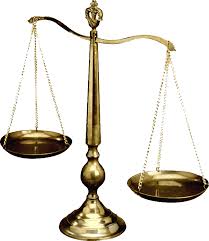Posts │ The definition of a research agenda is key for any organisation trying to be protagonist of the policy arena. However, setting a research agenda is not an easy process for think tanks in developing countries. The article reflects on external and internal influences and shares some ideas to define a research agenda.

The definition of a research agenda is key for any organisation trying to be protagonist of the policy arena. However, setting a research agenda is not an easy process for think tanks in
developing countries. It is often influenced by many factors — both internal (from the interests of the researchers to the ideology of the organisation) and external (such as the historical, political and cultural context; and characteristics of the demand).
On the other hand, the definition of a research agenda is linked to a think tank’s capacity to influence public policies. For instance, when think tanks set their own research agenda they are often autonomous but distanced from the political system. The opposite takes place when influenced by exogenous variables: think tanks lose autonomy but are more aligned with priorities in the policy arena. An analysis of how think tanks (or similar) define their research agenda will also help to understand, among other things, their potential for policy influence.
Many questions surround the definition of a research agenda: What factors are most relevant for think tanks in developing countries? To what extent do funding and donor practices shape national research agendas? Can southern think tanks pursue their own research flagships? What is the role of ideology and researchers’ interests? How can think tanks find a balance between a complete autonomy and heteronomy?
External influences
There is a consensus in literature about the influence of contextual factors on research agendas. The national and regional histories along with political and cultural environments all have great influence in the origins, characteristics and research of think tanks.
Regarding the stakeholders involved in the policy making process, think tanks often interact with different actors ranging from the political system to the private sector to academic institutions. Thus, the think tank plays a game in which it offers ideas and products, but at the same time it needs to deal with demands. The key point here is to find the correct balance between autonomy and heteronomy.
Internal characteristics
In addition to contextual variables, internal variables — those that reflect the identity, management, goals and activities of an organisation and are under the direct control of the think tank — shape those issues on which the organisation will work. These can include the programmatic structure, seniority of the staff and the funding model.
Braun et al (2010) highlight the weight of the characteristics of research management (selection of research topics, process and characteristics), drawing the conclusion that the interests and motivations of the staff (linked to their expertise) are a key factor in influencing the
definition of a research agenda.
The funding model
Regarding the funding model, it can be seen as both an internal and external variable. The definition of a research agenda and the funding model seem to be undoubtedly linked. Whether funding is governmental, private or philanthropic, a think tank’s source of funding can be seen as a threat to the autonomy and objectivity of their outputs. Should think tanks diversify their sources? How do you
harmonise the expectations of different funders? Are there other types of funding models that think tanks and donors can explore?
Some ideas
So what can think tanks do to define their own research agenda? Below I share some ideas to keep a balance between autonomy and heteronomy:
• Set their own institutional mechanisms, spaces and/or internal policies to evaluate projects, funding sources and the mission and values of the organisation
• Related to the previous point, think tanks should try to keep autonomy by learning to say ‘no’ to some projects, if they believe that it will affect its reputation
• Design and carry out ‘flagship projects’ — strategic and long term initiatives that work as umbrellas for the rest of the projects, activities and products. These would also generate an organisational identity and set priorities in terms of fund raising and policy influence strategies
• Respect staff interests and encourage them to be innovative in their research field
• Diversify funding sources. This can mean across sectors or development of sector ‘consortia’ involving similar companies or funding organisations but reducing the influence of a single funder
• Engage with political parties, national NGOs and citizenships, to map priorities in terms of national policy and work on them
• Navigate politics with a long term objective. That is to navigate conjuncture and the short-term, but with a long-term perspective that allows the think tank to set issues
By Leandro Echt, Coordinator of the Influence, Monitoring and Evaluation Program at CIPPEC. The article has been published at the INASP’s newsletter (December 2012).



